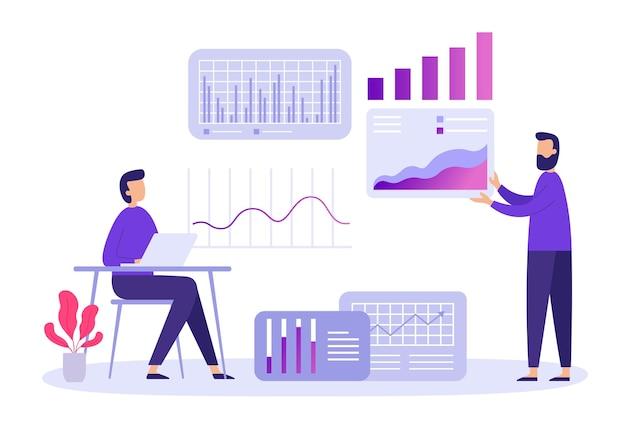Data Modernization is the process of upgrading your systems, tools, and infrastructure to keep up with the demands of today’s ever-changing digital landscape. It’s become increasingly important for companies to modernize their data in order to optimize their operations, improve decision-making, and stay ahead of the competition. But what exactly is Data Modernization, and what are the current trends and strategies in this field?
In this blog post, we’ll explore the key components of Data Modernization, including data governance and Gartner best practices. We’ll also delve into the latest trends in application modernization and discuss the importance of staying up to date with technology advancements. By understanding these critical aspects of Data Modernization, you can create a roadmap for successful implementation and drive better business outcomes.
So, whether you’re a CIO, IT Manager, or Data Analyst, this post will provide insights and actionable advice for taking the next steps in your data modernization journey. Join us as we take an in-depth look at the strategies, trends, and best practices in this exciting and evolving field.
Data Modernization Trends
If you’re a business owner or data analyst, you’re probably familiar with the term “data modernization trends”. But what does it mean? Let’s explore what data modernization is and the top trends in data modernization in 2021.
What Is Data Modernization
Data modernization is the process of modernizing outdated or inefficient data infrastructure and systems. In simpler terms, it’s like renovating a house to bring it up to date and make it more livable. The goal of data modernization is to implement more advanced technology and methods to manage, store, and analyze data more efficiently.
Top Trends in Data Modernization
-
Cloud-Based Data Management – More businesses are moving their data to cloud-based platforms to improve storage and analysis capabilities. With cloud-based data management, businesses have access to real-time data, enabling faster and more accurate decision-making.
-
Artificial Intelligence – AI-powered data management plays a key role in modernizing data infrastructure. It can help automate repetitive tasks, improve data quality, and enable predictive analysis.
-
Data Security and Privacy – As data becomes more valuable, there’s an increasing need for stronger security and privacy protections. Modern data management systems must have robust security measures in place to prevent data breaches and protect sensitive information.
-
Data Integration and Inclusion – In today’s data-driven economy, businesses need to bring together data from multiple sources and analyze it in real-time. Data integration and inclusion involve incorporating data from various sources into a single, comprehensive system.
-
Real-Time Data Analytics – With the proliferation of IoT devices and other sources of real-time data, businesses need to have the ability to analyze data in real-time. Modern data management systems enable businesses to monitor and analyze data as it’s generated, providing valuable insights and enabling faster decision-making.
Data modernization is a crucial process for businesses that want to stay competitive in today’s data-driven world. By adopting the latest data management trends and technologies, businesses can streamline their operations and gain a competitive advantage. Whether it’s cloud-based data management, AI-powered analytics, or real-time data integration, the key to successful data modernization is staying up-to-date with the latest trends and constantly evolving and improving data infrastructure.
Data Governance: Ensuring Data Compliance and Integrity
In today’s data-driven age, companies have to handle large volumes of data regularly. With data modernization trends, businesses can better manage and analyze information to gain valuable insights. However, it’s critical to ensure data governance to maintain data quality, security, and compliance.
What Is Data Governance, and Why Is It Important
Data governance is the process of managing and controlling data availability, usability, security, and integrity in an organization. It involves establishing policies, procedures, and roles that define how data should be managed, stored, used, protected, and accessed.
Data governance helps ensure:
- Data Compliance: Companies must comply with various regulations such as GDPR, CCPA, HIPAA, and others that require proper data management practices. Data governance ensures that information is collected ethically, kept secure, and processed in compliance with regulations.
- Data Quality: Data quality refers to the accuracy, relevance, completeness, consistency, and uniqueness of data. Data governance ensures that data is of high quality, which improves decision-making, reduces errors, and increases efficiency.
- Data Security: Data breaches can lead to significant financial losses, reputational damage, and legal consequences. Data governance establishes protocols for securing data from unauthorized access, use, or disclosure. It also ensures that all employees are aware of their roles and responsibilities regarding data security.
- Data Integrity: Data can be easily corrupted or tampered with if not managed correctly. Data governance ensures that data is reliable, accurate, and trustworthy, which is essential for making informed decisions and building trust with customers.
How Does Data Governance Work
Data governance involves the following steps:
-
Establishing a Data Governance Committee: The committee is responsible for overseeing data governance policies, enacting changes, and managing data-related issues.
-
Developing Policies and Procedures: The organization should develop clear policies and procedures that define how data should be managed, protected, and accessed. These policies should align with regulatory and compliance requirements.
-
Assigning Roles and Responsibilities: The organization should assign specific roles and responsibilities to employees responsible for data management, such as data stewards.
-
Monitoring and Auditing: Monitoring, and auditing data use, access, and manipulation ensures compliance and data quality. Organizations can use software tools to automate these processes.
Data governance ensures that information is managed ethically, securely, and accurately. When data is trustworthy, it gives businesses a competitive edge by improving decision-making and customer trust. Organizations that prioritize data governance have better compliance, security, and quality outcomes.
Data Modernization Gartner
Gartner is a leading research company that provides information, advice, and tools for business leaders. In recent years, Gartner has been closely following the development and adoption of data modernization technologies. Here are some of the insights they have shared:
The Definition of Data Modernization
According to Gartner, data modernization is the process of transforming traditional data solutions into more agile and scalable ones. This involves upgrading legacy systems and moving towards cloud-based architectures that support real-time data processing and analytics.
The Benefits of Data Modernization
Gartner highlights several benefits of data modernization, including faster access to insights, improved data quality, reduced costs, and increased agility. By adopting modern data solutions, businesses can better leverage their data and gain a competitive advantage.
The Challenges of Data Modernization
While the benefits of data modernization are clear, Gartner notes several challenges that organizations may face. These include legacy technology, lack of skilled personnel, integration issues, and cultural resistance to change. Overcoming these challenges requires a thoughtful strategy and a commitment to change.
Strategies for Successful Data Modernization
Finally, Gartner offers some strategies for organizations looking to modernize their data solutions. These include focusing on business outcomes, leveraging data governance and management practices, prioritizing data quality, and building a strong data culture.
In conclusion, data modernization is a critical trend that businesses must embrace to stay competitive in today’s rapidly-evolving landscape. By understanding the insights provided by Gartner and implementing best practices, companies can successfully modernize their data solutions and gain the benefits of enhanced agility, speed, and insights.
What Is Data Modernization
In today’s world, technological advancements have had a significant impact on the way businesses operate. One of the most critical aspects of any business is its data management system. As technology continues to evolve, businesses need to modernize their data management systems to remain relevant in the market. But what exactly is data modernization?
Defining Data Modernization
Data modernization refers to the process of upgrading an organization’s legacy infrastructure to meet the current technology and business needs. In simpler terms, it is the process of updating your data management system to make it more efficient, secure, scalable, and cost-effective.
The Need for Data Modernization
As businesses generate an increasing amount of data from various sources, it becomes crucial to store, manage, and analyze that data effectively. Legacy data management systems are typically limited in terms of scalability, flexibility, and security. They are also expensive to maintain, and their integration with modern technologies is quite challenging. These make it necessary to modernize legacy data management systems.
Benefits of Data Modernization
Modernizing your data management system comes with several benefits, including increased efficiency, improved data quality, enhanced scalability, better security, and reduced cost of ownership. A modernized data management infrastructure also provides real-time insights into business operations, enabling companies to make informed decisions.
Data Modernization Strategies
There are various ways to modernize your data management system, and the choice of strategy largely depends on your specific business needs and the current state of your system. These strategies may include migrating to cloud-based platforms, adopting modern data architecture, implementing effective data governance, and embracing Agile data management methodologies.
Data modernization is a critical aspect of any business that wants to remain competitive in the modern market. It involves upgrading your legacy data management system to meet current business and technological needs. Modernizing your data management system comes with a plethora of benefits, including improved efficiency, scalability, security, and cost savings. Businesses must adopt an appropriate data modernization strategy that aligns with their specific business needs to achieve optimal results.
Data Modernization Trends and Strategies
As technology continues to advance, data modernization has become a buzzword in the tech industry. Companies are now considering modernizing their data infrastructure to keep up with the digitization of businesses. Data modernization involves upgrading legacy systems to newer and more comprehensive systems that meet the demands of modern digital infrastructure.
Why Data Modernization is Essential
Data modernization is essential to keep up with the ever-evolving digital landscape. It ensures that companies can take advantage of new data systems and technologies as well as keep up with the demands of their customers. Companies that fail to modernize their data infrastructure risk losing relevance and competitive advantage.
Data Modernization Strategies
When planning for modernizing data infrastructure, companies should consider the following strategies:
1) Set Clear Objectives
It’s essential to set clear objectives before modernizing data infrastructure. This includes having a clear understanding of what data modernization will entail, the expected outcome, and setting project timelines.
2) Leverage Cloud Computing
Leveraging cloud computing is a great way to modernize data infrastructure. It offers scalability, cost-effectiveness, and improved security features. Moving to the cloud also means eliminating the need for expensive on-premise hardware infrastructure.
3) Implement Analytics and AI
With data modernization, companies can leverage analytics and AI to make informed business decisions. Companies can analyze data to gain valuable insights into customer behavior, which can be used to improve products and services.
4) Focus on Data Governance
Data governance is a critical aspect of data modernization. It provides a framework for data management and ensures data integrity, quality, and security. Companies should focus on data governance to ensure proper management of data through its entire lifecycle.
In conclusion, data modernization is becoming increasingly crucial in the digital age. Companies should invest in data modernization to take advantage of modern technologies and stay ahead of the competition. Companies should consider implementing strategies such as setting clear objectives, leveraging cloud computing, implementing analytics and AI and focusing on data governance to achieve a successful data modernization project.
What are the Latest Trends in Application Modernization
Application modernization is an essential process for businesses that want to stay ahead of their competitors. This process helps companies create scalable, agile, and resilient applications that can respond quickly to changing market requirements. In this section, we’ll discuss the latest trends in application modernization that you need to know about.
Microservices Architecture
Microservices are a software development technique where an application is divided into several smaller services that work together. Microservices are the latest trend in application modernization because they make it easier to develop, test, and deploy applications. This architecture helps businesses build scalable applications that can run on various platforms, including cloud, on-site, or hybrid.
Containerization
Containerization has become a popular approach to application modernization. It is a technique of isolating an application’s dependencies and runtime environment in a container. Containers provide an easy and quick way to run applications in different environments, such as development, testing, and production.
Cloud Native Applications
Another recent trend in application modernization is the adoption of cloud-native applications. Cloud-native applications are designed specifically for cloud computing environments and use cloud technologies. This approach helps businesses build applications that are scalable, secure, and highly available.
Low Code/No Code Platforms
Low code/no code platforms are becoming popular in application modernization due to their ease of use and low cost. These platforms allow non-technical users to develop applications without writing a single line of code. This approach makes application development faster and more accessible.
AI/ML Integration
Artificial Intelligence (AI) and Machine Learning (ML) are transforming application modernization. AI/ML algorithms can be used to improve application performance, security, and user experience. This technology can also help automate the software development process, making it faster and more efficient.
In conclusion, application modernization trends are an exciting area that companies need to watch carefully. The adoption of microservices, containerization, cloud-native applications, low code/no code platforms, and AI/ML integration is driving innovation in the software industry. By embracing these trends, companies can build modern, efficient, and scalable applications that meet the evolving needs of their customers.



